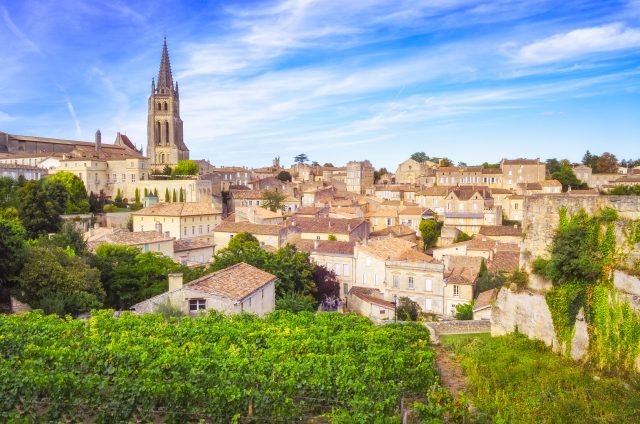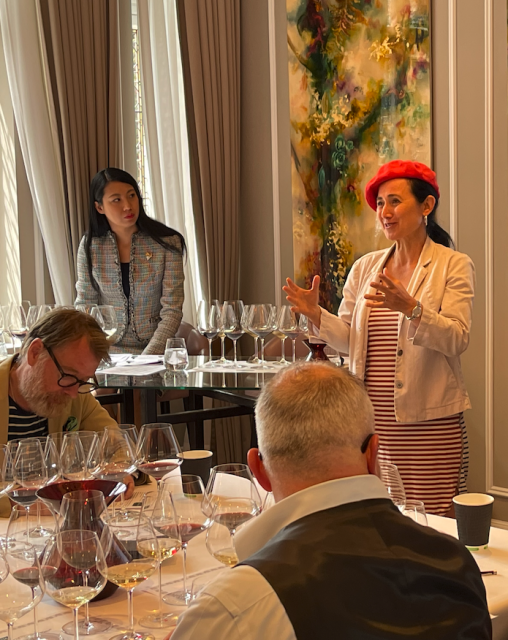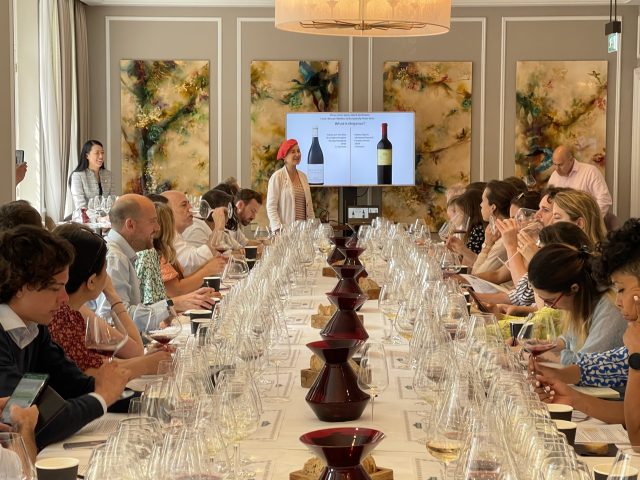Should non-French countries be able to use the term Grand Cru?
A hot topic debated at an event hosted by Laura Catena this week was whether the French term could, or should, be adopted by other winemaking countries. db joins the discussion.

The question of whether the term ‘Grand Cru’ should be adopted by non-French winemaking regions to describe their vineyards was fiercely debated at a gathering of independent wine traders, sommeliers and press in London this week.
Hosted by Laura Catena, db’s ‘Woman of the Year’ and managing director of Argentine winery Catena Zapata, the topic was thoroughly dissected from all sides.
The springboard for the discussion was the fact that while there is no equivalent term for Grand Cru outside of the French language, many winemaking countries encompass vineyards which grow grapes of equally high quality as Grand Cru villages.
“When a word becomes so descriptive of a certain character, such as the word ‘terroir’, for example, it becomes internationalised,” began Catena. “How often do you hear the Spanish or English equivalent used for terroir? The French term is used all over the world. Maybe it is time for Grand Cru to be used globally, in much the same way?”
With Grand Cru essentially referring to ‘the great vineyards’ or ‘wine from a special place’, continued co-host Dirceu Vianna Junior MW, then “why not use it to denote superiority in wine anywhere in the world?”
Alongside a tasting of Catena Zapata wines next to ‘old world’ styles from the likes of Burgundy and Bolgheri, members of the trade voiced forthright opinions both ways.

Whichever side of the fence they were on, guests thought it interesting that the wine world continues to look to France as a point of reference. However, many queried why a non-French producer would wish to adopt the French term as opposed to coining a different phrase from their native language to sum up the same principle.
Others still argued that the term Grand Cru carries such weight after more than 150 years of use that the benefit to other nations of being able to adopt the instantly recognisable moniker would be invaluable.
“There is power in being part of a club,” said Laura Catena.
The stickler of course, is that with the likes of Ausone, Cheval Blanc and more recently, Chateau La Gaffelière, choosing to leave the Saint-Emilion classification, why would other countries want to enter a world that is being abandoned? Or as one guest put it: “The term Grand Cru has been bastardised to the point where it does not equate with quality anymore”.
Some felt that Grand Cru simply comes with too much baggage to be of benefit. “It comes with an implication that you are imitating rather than creating,” voiced one guest. “Which could actually be a disservice to your wines.”
There is also the matter of increased regulation, which comes hand in hand with embracing such terms. The drinks business posed the question: Are winemakers prepared to sacrifice their creative freedom in order to benefit from the prestigious term?
“What I’m proposing is not necessarily using the Grand Cru term on the label but being able to refer to our wines as a Grand Cru Malbec, for example,” said Catena. “We’re talking about a very special site that gives a distinctive flavour and a wine that is extraordinary and can be aged.
“If we were thinking of putting Grand Cru on the label then we’d have to consider very carefully because Grand Cru denominations in France have all these rules which are somewhat archaic, relating to yields, or not using water, which we need to in our country or we wouldn’t be able to farm. Also, the kind of varieties you can plant, which wouldn’t make sense in a climate-change context.”
Catena added: “It would be wrong for Argentina to be able to do whatever we want when in France they have all these regulations, so I’m not talking about using it on the label. I agree that anything that limits us is not good, especially in the context of climate change.”
The point was well made that with producers increasingly putting their terroir-focused wines in the spotlight it may negate the need for the French term: “The fact that you put your single-vineyard wines out there shows that you respect a superior terroir, so why adopt the Grand Cru term? It speaks for itself,” said one member of the trade.
Appearing to agree, Dirceu Vianna Junior MW compared a wine producer wanting to use the French term for its wines with a martial arts student trying to “better their sensei, or teacher”.
Partner Content
The only possible way of triumphing, he said, is by playing to your own unique strengths, simply because no one else has them. By this logic, developing a term which speaks to the particulars of one’s own terroir and region would seem to make a good deal of sense, rather than borrowing old tricks from the “sensei”.

Some of the initial shock that people feel when a winemaker from Argentina, or from Chile, Australia or Napa, proposes using a term like Grand Cru, stems from a binary thinking about what it means to be a ‘New World’ or ‘Old World’ country.
Certainly, there are many who would say that ‘newer’ winemaking countries haven’t earned the right to profit from a centuries-old French system.
However, Adrianna Catena – who represents Catena Zapata’s interests in the UK – pointed out that such terms as Old Vs New World can be problematic. “It over-simplifies and keeps you from seeing the good stuff,” she said.
“Are you going to tell China that they are New World?” demanded Laura Catena, who explained that Catena Zapata’s vineyards are home to ungrafted massal selections that came to Argentina in the late 1850s. You’d be hard pushed to describe such heritage vines as ‘new’….
Phil Crozier of Wines of Argentina suggested that rather than getting enmeshed in whether or not certain terminologies should be available to all, there was a bigger issue at stake: “I think everyone wants to get to the point where the producer’s name sells itself. So this wine is above all, a Catena Zapata wine,” he said.
One of the objectives of the debate and tasting, which took place in Chelsea’s Cadogan Hotel, was to celebrate the diversity of wines made in Europe and South America, but also to recognise their clear parallels in terms of quality.
Having tried Sassicaia 2017 alongside Nicolás Catena Zapata 2019, both using Cabernet Sauvignon and Cabernet Franc, but with the Argentine wine also weaving in a magical 30% Malbec, I wonder whether Argentina might be better off sidestepping France altogether and emualating the ‘Super Tuscan’ approach instead.
A ‘Super Mendoza’ or ‘Super Uco” has a certain ring to it.
“Forget about sleep tonight. I will not stop thinking about all your comments,” concluded Catena, winding up the discussion.
Related news
Strong peak trading to boost Naked Wines' year profitability




